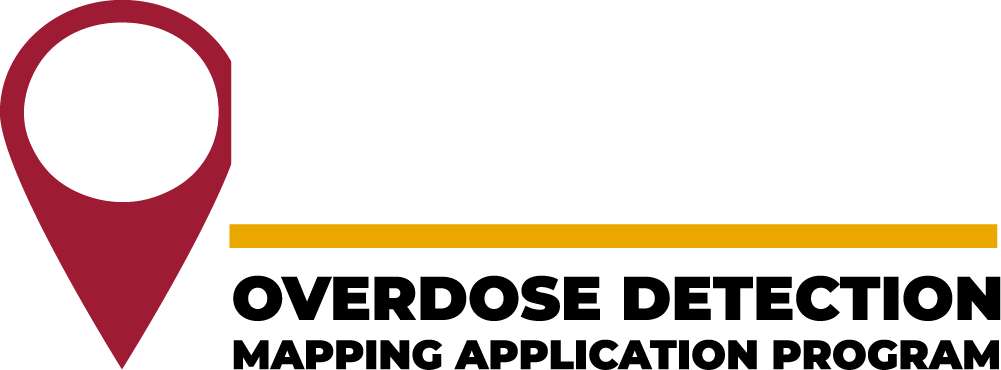

ODMAP provides near real-time suspected overdose data across jurisdictions to support public safety and public health efforts to mobilize an immediate response to a sudden increase, or spike, in overdose events. ODMAP links first responders and relevant record management systems to a mapping tool to track overdoses to stimulate real-time response and strategic analysis across jurisdictions.
Each agency wishing to use the system will sign a participation agreement, which is designed to protect the data within the system. Once signed, they can begin uploading data in near real-time through a variety of methodologies. They can also get access to the National Map, which allows select users to view nationwide data and create custom visualizations. ODMAP is only available to government (federal, state, local, or tribal) agencies serving the interests of public safety and public health.
ODMAP is a web interface which can be accessed from any device and through a CAD system. The system is designed to minimize the effort and time required by a first responder to enter data. It will report date and time when accessed, and if the user accesses ODMAP in the field, the system will default to the GPS coordinates of the device for the location, or they can enter an address. The user must record whether or not the overdose incident is fatal or non-fatal and the extent to which naloxone or an overdose reversal drug was administered, in all taking seconds and provides the Level 1 user a confirmation when entered.
An Application Programming Interface (API) is a popular method for stakeholder agencies to contribute data without creating additional (manual) reporting or processes. The API allows for data integration by connecting with the agency or state’s Record Management Software (RMS) to ODMAP. An API allows for the direct, automated integration of the two systems.
ODMAP connects to diverse fields such as EMS, Law Enforcement, and Health. EMS has adopted the National Emergency Medical Services Information Systems (NEMSIS). Law Enforcement does not have an industry adopted standard similar to NEMSIS, although, there have been attempts at utilizing the National Information Exchange Model (NIEM) standards, it is not implemented nationally. As a result, ODMAP developed a custom API which is simple to consume across disciplines.
ODMAP utilizes a REST API, combined with a JSON payload to transfer data between both systems. This is a combination of modern technology that is developer friendly and compatible with nearly all programming languages. Once an Agency identifies the data in their RMS, it takes approximately 2-3 weeks to implement the API.
ODMAP data is controlled unclassified information (CUI) and may only be released to authorized personnel. Recipients of this information must have a need and right to know the information in the performance of their criminal justice and public health functions. The National Map is designed as a tool for decision-makers to be able to view and analyze the data, nationwide, submitted to ODMAP. Per the ODMAP Teaming Agreement, ODMAP shall only be used for its intended purposes.
The ODMAP Data Entry interface allows participating agencies to upload, in near real-time, suspected drug overdoses from anywhere in the country. With our Application Programming Interface (API), we are also able to receive data from agencies via a direct upload from their systems.
CloseThe National Map allows participating agencies to view the collected data suspected drug overdoses data, in near real-time, from anywhere in the country. Users are able to filter the data, overlay additional information, and create customs visualizations.
CloseAgencies are able to create Spike Alerts in Level 1 based on a either a recommended threshold generated by the system or using a number of there own choosing. These alerts can be sent to emails specified by the agency and when a spike does occur, it is tracked by the system and will appear in the Spike Alert History when it is over. Agencies can also create Spike Alerts for an entire state, allowing them to be notified if a spike occurs in any of the participating counties for that state. There is also that ability to create alerts for when an overdose has been entered into the system, based on state, coutnty, and incident type.
Close